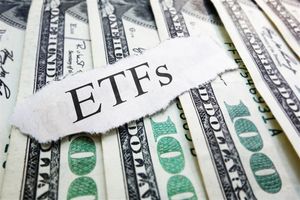NEW YORK CITY, NY / ACCESS Newswire / October 29, 2025 / To navigate the markets of 2026, traders will need to evolve beyond charts and instinct.
The future belongs to those who can integrate intelligent tools into their process - without losing human judgment.

1. Why Sentiment & News Tools Matter More Than Ever
In 2025, studies showed that combining large language models (LLMs) for sentiment and news analysis can enhance understanding of derivatives markets.
Markets are increasingly shaped by expectations and narratives, not just fundamentals.
A single comment or policy update can shift sentiment faster than earnings reports.
For example, a working paper by the International Monetary Fund (IMF) demonstrated that LLM-based sentiment analysis of central-bank communications correlates with subsequent market rate movements.
(Source: IMF Working Paper)
Integrating real-time sentiment data can help identify changes in market tone earlier.
The key is to filter noise and assign appropriate weight to each signal rather than reacting impulsively.
2. The Hybrid Edge: Algorithm + Human Judgment
Many traders attempt full automation, but blindly following models often leads to convergence around similar signals.
Recent research suggests that systems embedding self-review mechanisms may demonstrate greater adaptability over time.
In this context, the trader's role shifts from executor to curator - guiding systems, validating outcomes, and intervening when broader conditions demand human perspective.
This balance between automation and intuition is a recurring topic in professional trading circles, where structure and psychology remain core themes.
3. Risk Management in the New Era
With automation and sentiment analysis becoming more common, risk now extends beyond stop levels.
It includes correlations, overfitting, and regime shifts.
A modern framework might involve:
Adaptive stop logic - adjusting thresholds in line with volatility and sentiment;
Exposure caps - reducing concentration when signals overlap;
Event filters - mechanisms that pause activity during sudden sentiment or news shocks.
4. Execution & Slippage Awareness
Even robust models rely on effective execution.
In increasingly automated markets, slippage and latency can heavily affect outcomes.
A more thoughtful approach includes:
Smart order routing to minimize market impact;
Liquidity analysis to assess entry conditions;
Monitoring execution costs relative to expected performance.
5. Strategy Adaptation: Iterate, Don't Overcommit
Markets in 2026 may shift rapidly. Flexibility becomes essential:
Run smaller live tests instead of full deployments;
Regularly revalidate models using updated data;
Monitor divergence between sentiment and technical indicators to manage exposure.
Rather than rigid belief in a single model, approaches should remain adaptive and evidence-based.
Conclusion
Trading in 2026 will be less about speed and more about synthesis - combining technology, structure, and human awareness.
Those who cultivate clarity, discipline, and adaptability may be better equipped to navigate the volatility ahead.
Company details
Company Name Tyler White Trading Club
Contact Person Tyler White
Email info@tylerwhite.cfd
Website URL https://tylerwhite.cfd/yahoo
Country United States
City New York
Phone Number 1 212-555-0186
SOURCE: Tyler White Trading Club
View the original press release on ACCESS Newswire






